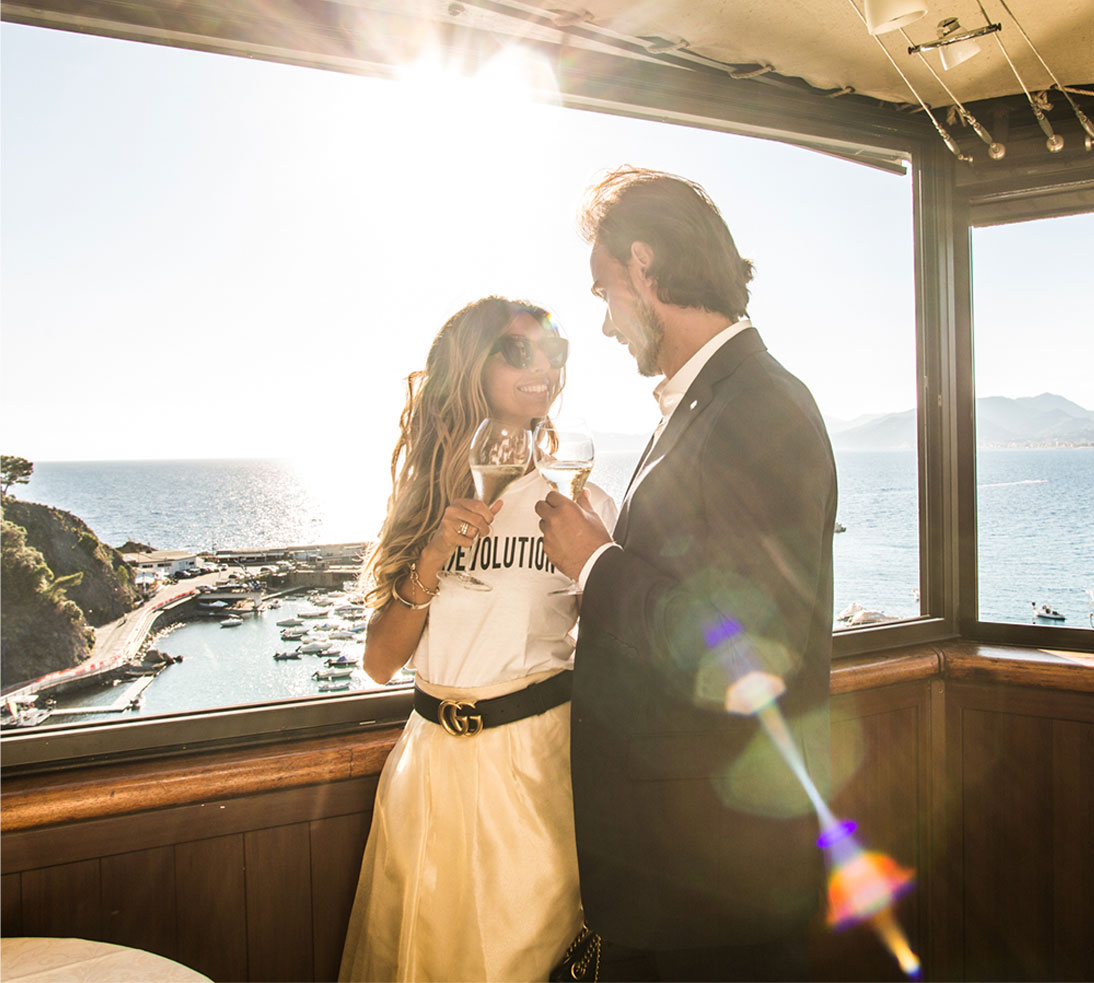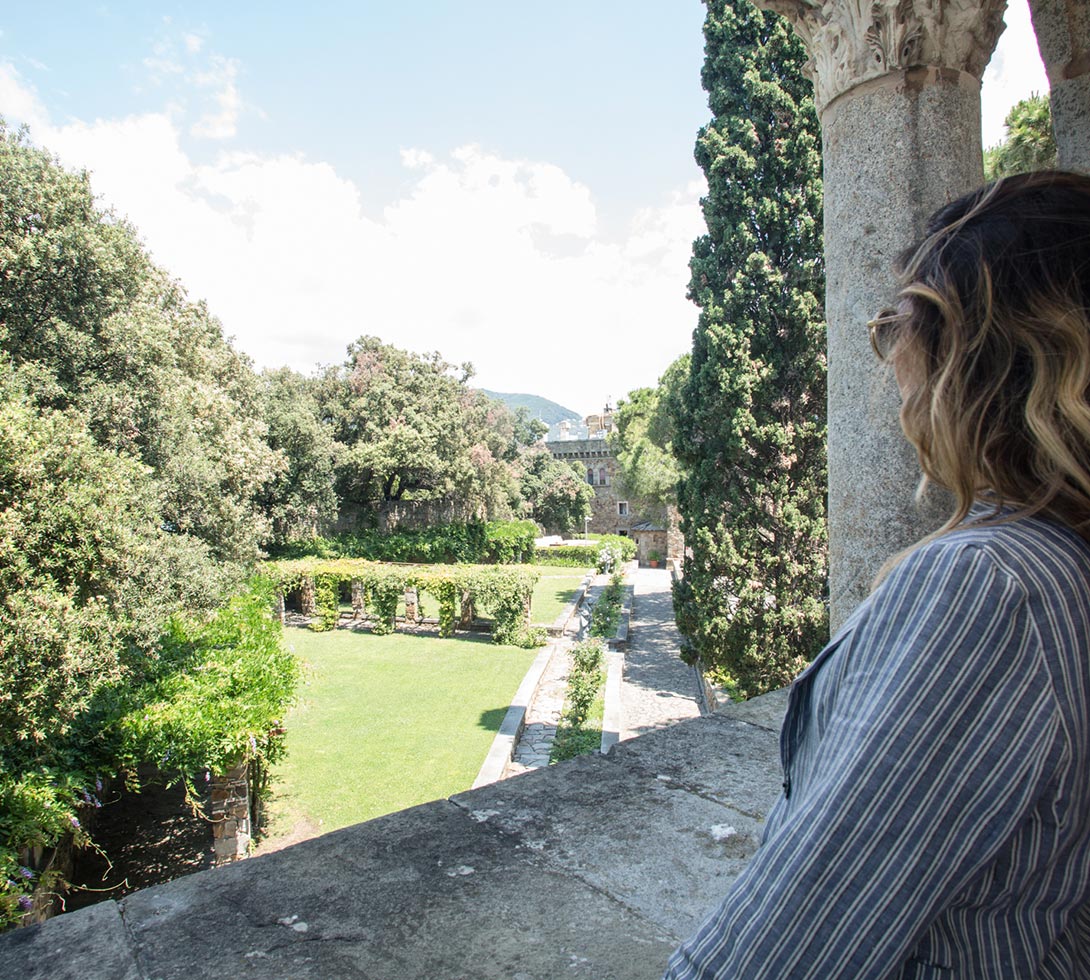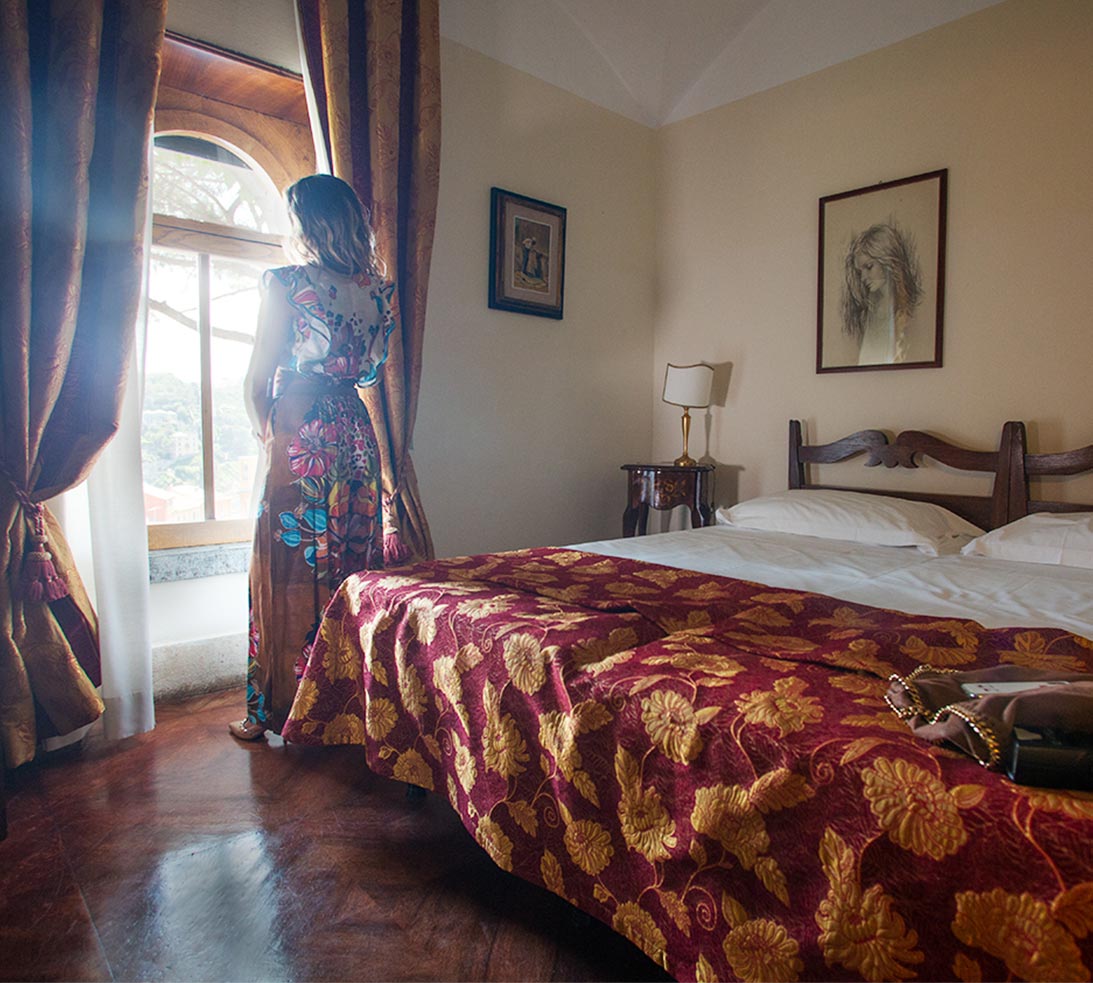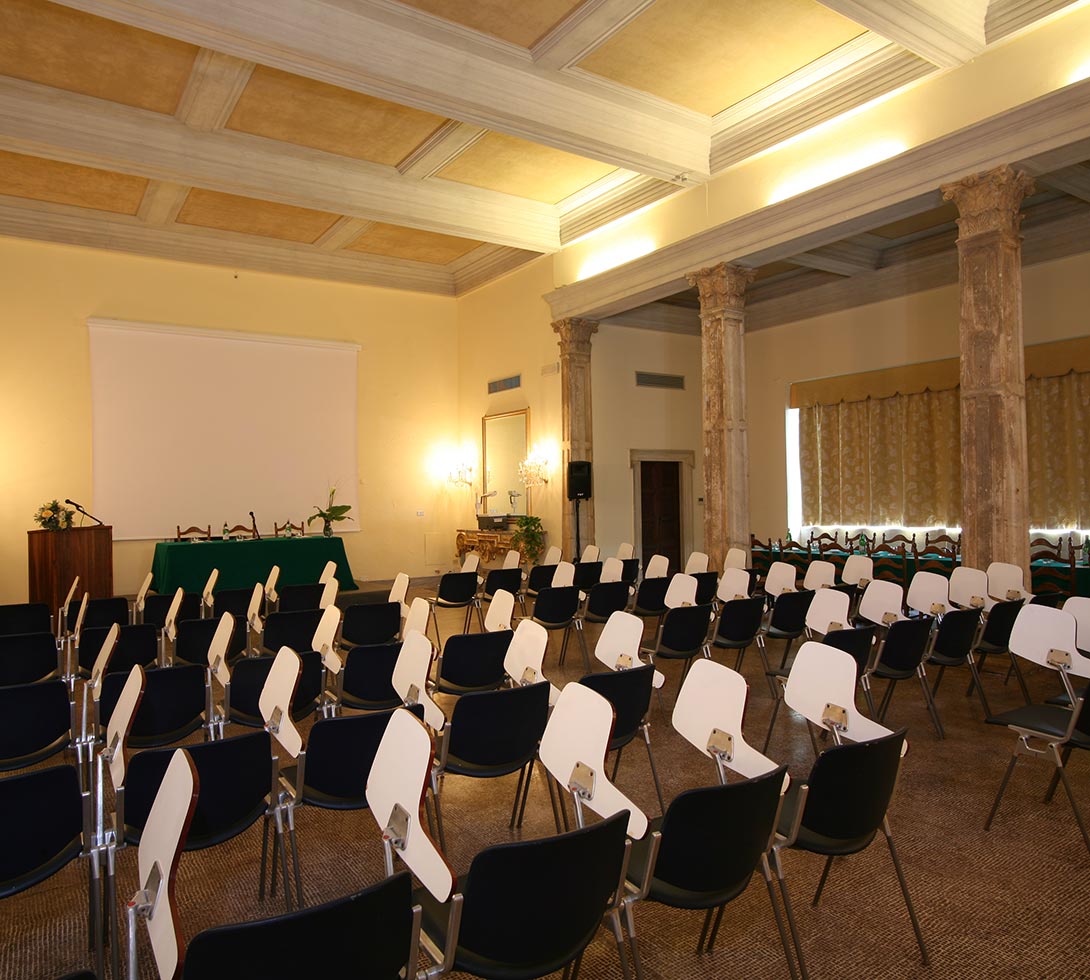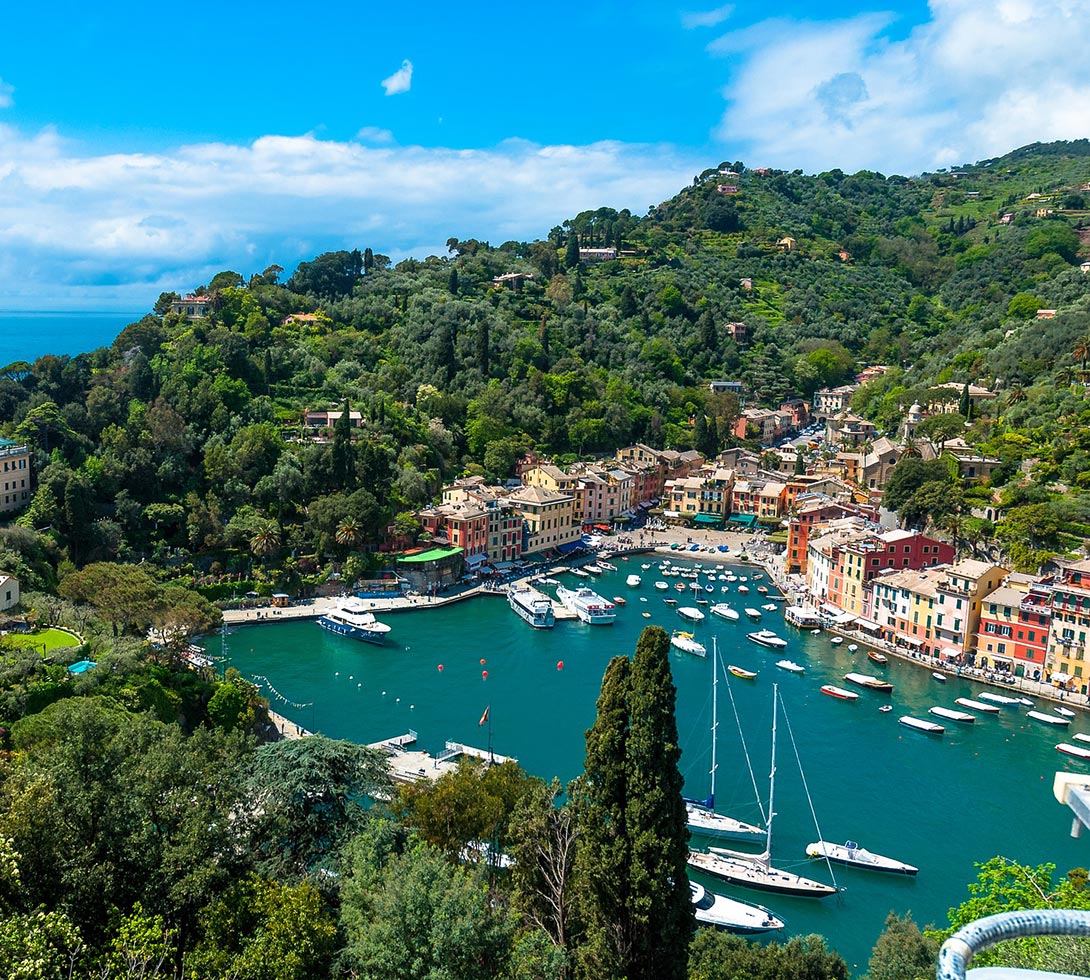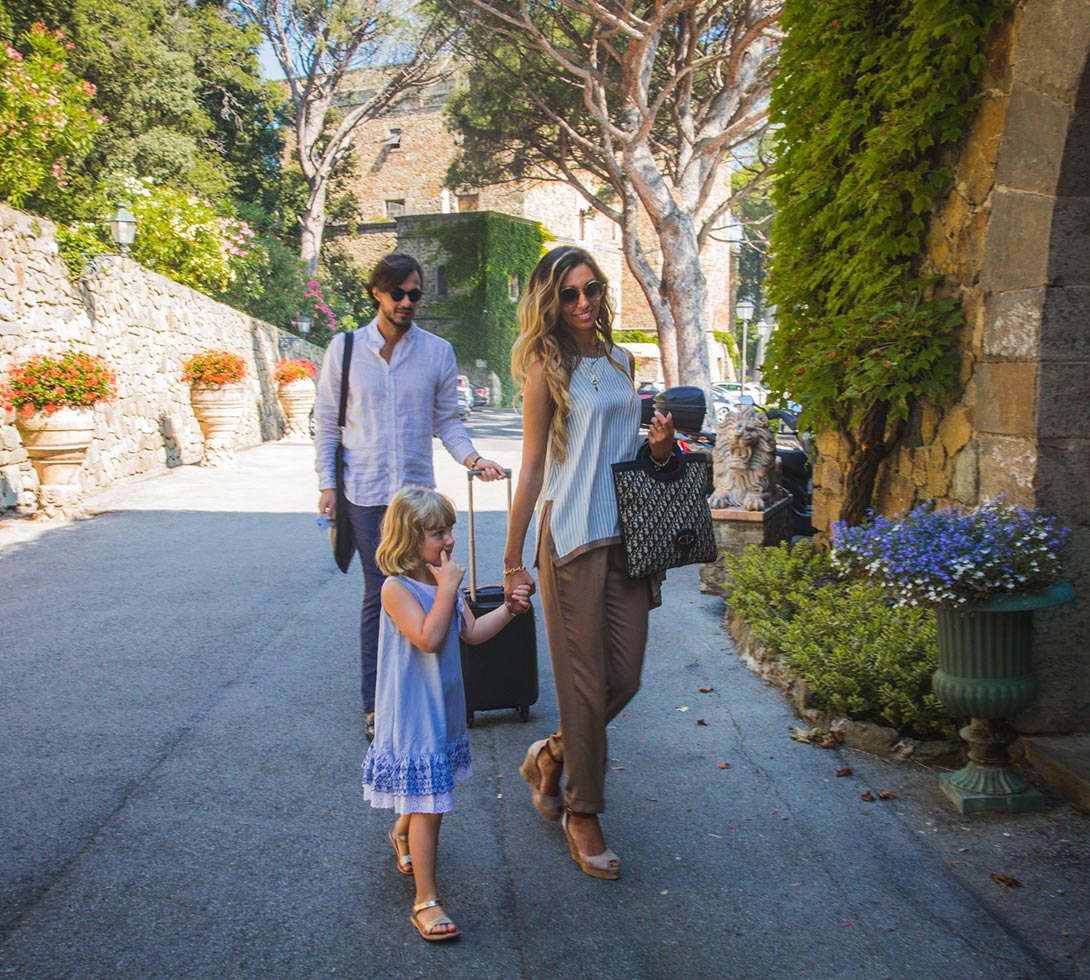Grand Hotel dei Castelli - Sestri Levante (GE) - Riviera Liguria, Italia, tra Portofino e le Cinque Terre

Booking on-line
 Best Rate Guaranteed
Best Rate Guaranteed Customer Service
Customer Service No extra charge
No extra charge Exclusive offers
Exclusive offers Immediate Confirmation
Immediate Confirmation
Sestri Levante and the Castles
between history and legend
Legend of Sestri Levante
"There was once a charming place overlooking the Liguria Sea, a corner where the Sea was more blue and where the Sun was in the sky longer. Here the Sirens, enchanted by the magnificent scenario offered by the island, chose their stay and layed on the rocks that, like small thrones, emerged from the water. From the shore, Tigullio, the youngest and beautiful of Tritoni saw a day Segesta, the most beautiful and fascinating of the Sirens with eyes more blue than Sea and hair shining more than Sun and immediately felt in love with her. One night, while the moon made silver the rocks and many, many stars beat like his heart, Tigullio tried to kidnap Segesta, but Neptune, God of the Sea, not liked that this paradise was deprived of the most harmonious of its gems and punished Tigullio making his arm like a rock. An isthmus was born, a great isthmus, which joined the island to the mainland... and even today it is impossible to watch this promontory, those rocks and the sea without thinking about Sirens."
History of Sestri Levante
The history of Castles begins in 1089 when the Island of Sestri Levante became the domain of the Republic of Genoa. In those days Sestri Levante was victim of raids and deportations by the pirates and Saracens. It was to safeguard Sestri people from these raids that consuls of Genoa in 1145 built the Castle of Sestri. Since then the island was turned into a citadel which access through four doors drawn from the walls. Here inhabitants found shelter in case of danger and refuged in the evening finished their business in the village. Between 1151 and 1190 was built the church of St. Nicolo', also wanted by the Republic of Genoa to give religious assistance to the islanders. To increase the safety of the "citadel" were constructed two other Castles, the first built in 1310 and the second, called "dell'Aquila", in 1440. What happened then we can not know and our story brings us during the Second World War when the troops of occupiers chose the peninsula as a refuge and bulwark and when it was heavily bombed and razed to the ground..
Legend of the Castles
There was once a Wizard of finance that, tired of fevered calculations and mundane noises, a day wished to build an oasis for the rest of the soul and for friendship occasions. He went around in various regions; travelled the two Rivieras, to give body to idea and asylum to poetry. Here came the Magician and exclaimed: "On this hill of bliss is beautiful having a rest to stop the shining moment." He called him men of chisel, opened the rich coffers:" Draw a full hands, but give me a fabulous residence, which has to be a break from all the weariness and balms to all concerns." Artisans and artists accepted the request ; they went in search of building rarities to raise the temple to beauty. Columns of porphyry and capitals, amphorae, tanks, mosaics, frames and architraves, arcades and staircases; treasures of the ancient age came to the enchanted promontory for the glory of art and the joy of pilgrims of nostalgia. Nature geave its gifts: bright prospects, superb views, projections and inlets, terraces and lookout, paths and fragrant trees, to adorn recesses and rock silences. In this way were built the magic Castles, that at first were seat of fun of Wizardo and today hatch to sweat rests and fruitful relax of everybody. Children of Nature and Art, Sea and Mountain, green and blue in happy marriage, the Castles have entered into legend and will remain in history. The manufacturer Magician, who valued one of the most beautiful landscapes of Italy, has led to other beaches, satisfied of new fate of Castles no longer « his » but « yours », of those who seek in the Beauty and in contemplation of the landscape a reason to live and forget..."
History of Castles
Around 1920 the peninsula was bought by Riccardo Gualino, financier, lawyer, industrial and collector of Biella who in his book "Fragments of Life" says "... on the peninsula a wonderful stretch of coast offered me an ideal place to build a villa". He began the remediation of the peninsula from the ruins and rubble of nearly a century of history and gave to architects Busiri-Vici of Rome and the art critic Lionello Venturi the construction of three new Castles. Capitals, columns, windows re-emerged from ruins of the ancient castles and Byzantine items recovered from ancient buildings of Southern Italy, were included in new buildings. Between 1925 and 1929 were built three buildings: the Castle of Cipressi, the largest and residence of Gualino, the Castle of Lecci, to receive guests and the Castle of Agavi for facilities and servitude. Around 1950 the entire complex was transformed into refined and luxurious hotel that is still today, retaining the charm of ancient and noble residence.
History of Tower Marconi
The history of the famous Tower Marconi deserves a separated chapter. On top of the peninsula in a strategic position, there was a warning tower dating from the 13 entury. Gualino, intimate friend of Guglielmo Marconi, invited the scientist to Castles and placed at its disposal the tower where the Nobel Prize led many of his experiments between 1932 and 1934. On July 30th 1934, Guglielmo Marconi in the presence of technicians, officers of the Italian and British Navy and numerous representatives of the press, succesfully completed the experiments on blind navigation. The Corriere della Sera testified the event: "Sailingo from Santa Margherita, "Electra" directed to Sestri Levante, on whose promontory was installed the radio - lighthouse. At about 800 meters from this there are arranged two buoys separated from 100 meters, among which "Electra has moved with great precision guided solely on the basis of the signals emitted by the radio - lighthouse."
